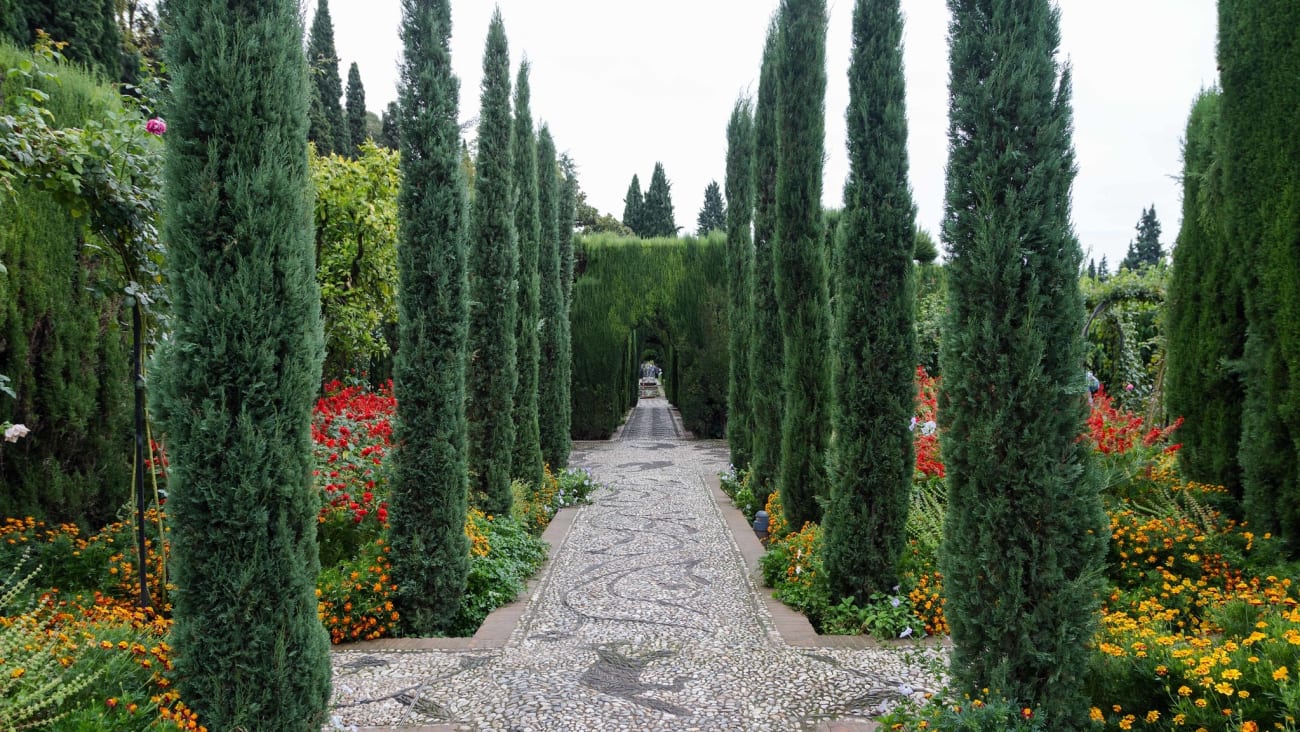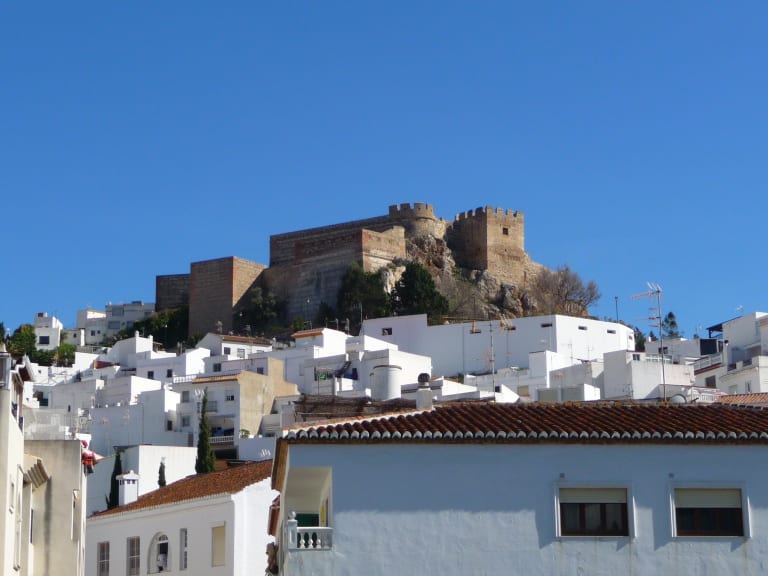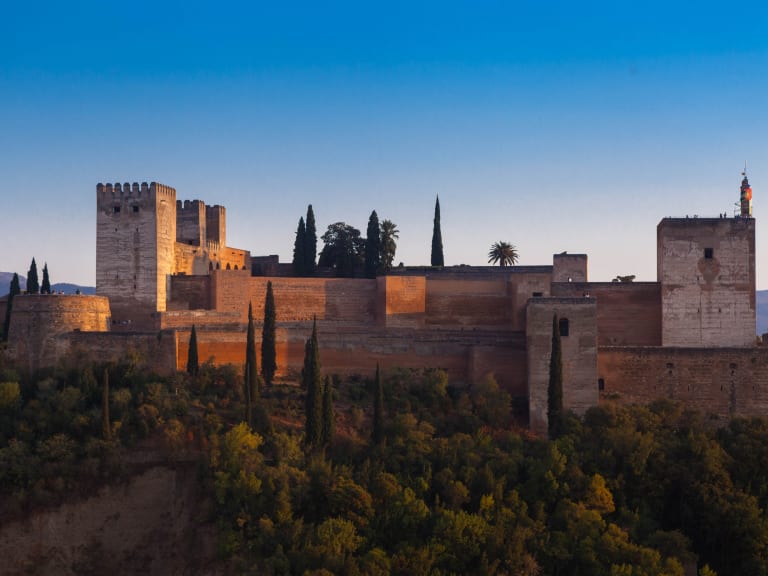10 Best Granada Towns
The charm of Granada goes beyond the city limits and can also be found in the villages of its province. Get to know the most beautiful ones and those you must visit in the list you will find in this article.

©Alexei Malutin
The city of Granada has a lot to do and see. And even more so if we take into account the various excursions to do from the Andalusian city. In this sense, one of the best things to do near Granada is a route through its villages. The province has many of the most beautiful villages in Andalusia and Spain, with a beauty comparable to that of the city.
A short distance from Granada there are more than a dozen villages that meet the expectations of being considered among the most beautiful in the region. From villages in the Sierra Nevada mountains to coastal towns and villages steeped in history, deciding which ones to visit can be an arduous task. Deciding which ones to visit can be a difficult task and to make it easier for you I have prepared this list of the best and most beautiful villages in Granada that you should visit.
1. Salobreña

Salobreña is the first village on this list and one of the ones that I would mark as a must visit.
Situated on the coast, between Almuñécar and Motril less than an hour's drive from Granada, this village is one of the most representative of the Andalusian architecture of the coast reflected in its whitewashed houses and facades and its steep cobbled streets.
Being located on a hill near the beach, it offers privileged views of the sea from almost every corner of the village.
The village is not only aesthetically beautiful, but also has several points of interest to visit. The main one is its castle of Arab origin which crowns the upper part of the village and which has many centuries of history, specifically since the 10th century. The Mudejar-style Rosary Church and the fountain park are other attractions. In any case, strolling through Salobreña is a real pleasure for the eyes.
2. Almuñécar

Continuing with the coastal towns, you will also have the chance to visit Almuñécar.
Among thecoastal towns of Granada it is one of the most beautiful and one of the most historic. It has several places of historical interest such as the Castle of San Miguel, the Roman aqueduct of Sexi or the archaeological park of El Majuelo among others. But Almuñécar's fame is not only due to these places.
It is also a temple of tapas, ideal for a gastronomic tour, and has some of the best beaches in the province. A winning combination whichever way you look at it.
The two great beaches of Almuñécar are Playa de la Caletilla and Playa de San Cristóbal which are separated by a rock known as the rock of the saint.
As well as being perfect for swimming, San Cristobal beach and another beach known as La Herradura are ideal for snorkelling. For all these reasons, Almuñécar is a perfect destination, especially in summer.
3. Montefrio

Montefrío has received many accolades from international media such as National Geographic, who included it in their list of the villages with the best views in the world.
And no wonder, since this village 50 kilometres northwest of Granada is located under the shelter of a rocky outcrop. Located in a mountainous environment, Montefrío was declared a historic-artistic site in 1982 thanks to its castle and the 16th century church of La Villa, as well as for being an important site during the reconquest.
The whitewashed houses and steep streets also make it a typical postcard of the beautiful Andalusian villages. A combination of history, beautiful surroundings and perfect panoramic views make it one of the most beautiful and important villages in Granada.
4. Guadix

The main reason that attracts thousands of tourists to Guadix is its famous cave houses. The village is surrounded by curious rock formations which the villagers took advantage of to build houses inside them to shelter from the summer heat.
So much so that the town has an entire neighbourhood of these houses, known as the cave quarter, where you can visit a house museum to discover their peculiarities. But Guadix has many more charms.
It is also one of the towns with the most historical and artistic heritage in the province. Its 11th century citadel was declared a national monument and although it is not possible to visit the inside, you can walk around it and enjoy the views from some of its viewpoints.
The Cathedral of Guadix, the new hermitage and the Roman amphitheatre are the other points that have contributed to the historical recognition of this beautiful town.
5. Bubión

If you are looking for a mountain village with stunning surroundings, Bubión is definitely the one to visit.
This village is located in the foothills of the Veleta peak, one of the highest in the Sierra Nevada, in the heart of the Alpujarra area of Granada. A region of great historical importance, as it was the last Moorish stronghold on the peninsula. Thanks to this, villages such as Bubión still have great examples of its architecture.
In fact, one of the most remarkable features of Bubión are its staggered houses without roofs. The best way to get to know the village is to stroll through its steep streets, enjoying the white façades decorated with flower pots and taking in the mountainous surroundings.
It is a very peaceful destination, perfect for relaxing or for hiking the trails that start from the village itself.
Bubión is located south of Granada, more than 1 hour and 20 minutes drive away, as it is a long stretch of mountain road, but well worth the journey.
6. Soportújar

Seen from the outside, Soportújar may look like just another village of steep, whitewashed streets. But the truth is that it is one of the most peculiar villages in Granada and I would dare say in Spain. This is due to its traditions linked to witchcraft.
In fact, Soportújar is known as the village of witches. Tradition has it that this village was chosen by witches and sorcerers to be their secret meeting place.
Walking through its streets you can feel that magical atmosphere, as there are several places such as caves in which witches are said to have lived, black cats, magic fountains and the occasional sculpture of witches that remind us of their strong link with this tradition.
If you are attracted by the idea of visiting it, I recommend that you do so in August during its festivities in which the "feria del embrujo" (haunted fair) is held. During these festivities all the lights in the village are turned off and only torches are lit to give the celebrations a magical atmosphere. As well as being original, Soportujar is comparable in beauty to other villages in the Alpujarra.
7. Alhama de Granada

Alhama de Granada is situated about 50 minutes south of Granada. Although it is not as well known as some of the other villages on this list, it has plenty of reasons to be on this list.
The village is in the middle of a natural park surrounded by ravines and in the middle of a gorge known as the Tajo de Alhama through which the river of the same name flows.
Its main attraction is its thermal baths of Arab origin, fed by a spring at the entrance to the village, where you can bathe freely and without paying an entrance fee.
In addition to its natural surroundings, Alhama has very pretty streets with historic buildings such as the old prison, the house of the Inquisition and the aforementioned spa. It is an extremely photogenic village and a natural starting point to visit part of the Sierra Nevada through its hiking trails.
8. Pampaneira

Pampaneira is very close to Bubión, also in the heart of the Alpujarra Granadina. In fact, they share charm and many architectural similarities with steep streets, white facades and staggered houses without roofs.
It is well worth a visit, along with Bubión, to discover why this small village of less than 400 inhabitants has received several national tourism awards.
What sets it apart from other villages in the area is its tradition of craftsmanship. Historically its inhabitants have been mainly craftsmen and even today there are several stalls selling samples of their remarkable skill. You can find carpets, baskets, wickerwork and pottery among other things.
9. Capileira

The Latin translation of the name Capileira is something like "the highest place". A name that honours its location at the foothills of the Sierra Nevada and at the foot of the Veleta and Mulhacén, the latter being the highest peak on the Iberian Peninsula.
Capileira is situated next to Pampaneira and Bubión at the top of the Barranco de Poqueira where these three beautiful villages are located. Due to its altitude at 1436 metres above sea level this village was one of the last to resist the Arab conquest and later the Christian reconquest.
Once you get to Capileira, the best thing to do is to enjoy the spectacular views. The village has several spectacular viewpoints but the best are the Tajo del Diablo, the Perchel, and the Junta de los Rios viewpoint.
Capileira is also a starting point for excursions to high mountain trails that lead to Las Eras de Aldeire or the mountain refuge at 2500 metres altitude which are the starting point for the ascent to the highest peaks of the peninsula, the Veleta and Mulhacén.
10. Trevélez

While we are on the subject of high altitude villages, we must mention the highest of them all. Trevélez is located at an altitude of more than 1500 metres, which makes it the highest village in the whole province and the peninsula. In fact it is one of the closest to the summit of Mulhacén.
It is 100 kilometres and almost two hours drive from Granada so you will need good arguments to visit it. But luckily it has them.
Trevélez is famous for its hams, which are produced in the village itself and where you can visit the drying sheds and learn how they are produced, as well as tasting them of course.
But it also has very interesting places such as the Church of San Benito rebuilt after the civil war. Also very popular are the festivities of the Virgen de la Nieves in August, during which there is a hike up to the peak of Mulhacén. But above all Trevélez is a village with a very varied and beautiful natural environment.
Other villages to visit

These ten villages are, in my opinion, the most beautiful in Granada. But the list could go on and on and on. If you have already visited some of these villages and would like to expand on them, here is a brief summary of others that could easily fit into this list and any of the best villages in Granada
Castril
Castril is another beautiful and typical Andalusian village with white houses and a beautiful natural environment. It is situated in the heart of the Sierra de Castril Natural Park, although it is some 140 kilometres from Granada.
Órgiva
This is a historically very important town in the region of the Alpujarra, which is in fact its capital. As a result of its importance, Órgiva has buildings such as the 18th century castle-palace of the Counts of Sástago.
Lanjarón
This town is famous for its waters. In fact, it gives its name to one of the most important brands of mineral water in Spain. These waters are also used in its spa. Although it is not only water, Lanjarón is also a village very suitable for strolling and enjoying its beautiful streets.
La Calahorra
La Calahorra is located in the region of Guadix near the Sierra Nevada National Park.
The village grows around a hill on which stands its castle which can be visited to enjoy the views that the village has to offer. In winter it serves as a gateway to the ski resort of Puerto de La Ragua.
How to get to these villages

All these villages are less than two hours from Granada, although some are more accessible than others. Here is a summary of the best means of transport and options for getting to them:
- By car: If you have a car, this is the most recommended means of transport to visit the villages of Granada. Mainly because of the freedom it gives us and above all because it is the most comfortable way to get to the most remote villages in the mountains. In the case of Sierra Nevada, here you have a post dedicated to How to get to Sierra Nevada.
- By bus: The bus is the best alternative, and in many cases the only way to get to these villages. Alsa is the company that offers trips to all these destinations from the bus station in Granada.
- By train: The train is only valid to go to Guadix, as it is the only town on this list connected by train to Granada. It is a regional Renfe train that takes just over an hour to cover the journey.
